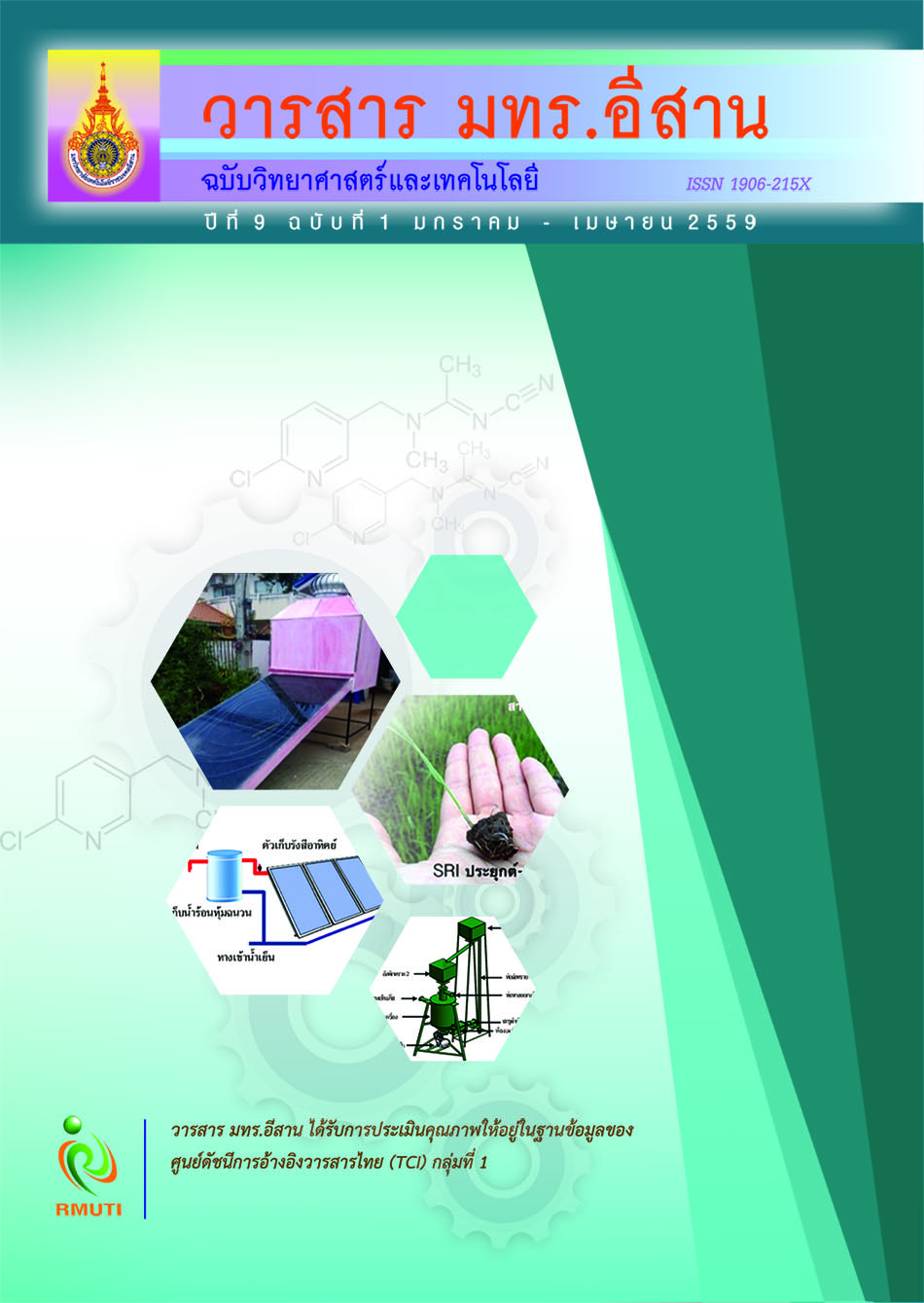ผลของอนุภาคซิลิคอนคาร์ไบด์ต่อโครงสร้างจุลภาคและสมบัติทางกลในวัสดุ ผสมอะลูมิเนียม A356 (Effects of SiCp Additions on Microstructure and Mechanical Properties of Aluminium Composite Material A356)
Main Article Content
Abstract
บทคัดย่อ
งานวิจัยนี้มีวัตถุประสงค์เพื่อทดสอบสมบัติทางกลของอะลูมิเนียมผสมเกรด A356 ที่เติมด้วยอนุภาค
ซิลิคอนคาร์ไบด์ และวิเคราะห์โครงสร้างจุลภาคของวัสดุผสมวัสดุที่ใช้เป็นเนื้อพื้นหลักคือ อะลูมิเนียมผสม
เกรด A356 และวัสดุที่เป็นวัสดุเสริมแรงคือ อนุภาคซิลิคอนคาร์ไบด์ขนาดเฉลี่ย 35 65 และ 95 ไมครอน
ตามลำดับ โดยแต่ละขนาดเฉลี่ยจะถูกเติมในปริมาณ 5 10 และ 15 เปอร์เซ็นต์โดยนํ้าหนัก กวนด้วย
แรงทางกล 230 รอบต่อนาที จากนั้นจะเทผ่านรางที่ทำมุมเอียงจากระดับพื้น 45 องศา ไปยังแบบหล่อโลหะ
พบว่าอนุภาคซิลิคอนคาร์ไบด์ขนาดเฉลี่ย 65 ไมครอน ปริมาณการเติม 5% มีค่าความแข็งสูงสุด
283 Kp/mm2 ขณะที่ค่าความสามารถรับแรงกระแทกมีค่าตํ่าสุด 2.9 J และค่าจากการทดสอบแรงดึง
พบว่ามีค่า Yield Strength 139 MPa, Ultimate Tensile Strength 259 MPa และ Elongation
0.61% เมื่อนำไปเทียบกับอะลูมิเนียมผสมเกรด A356 ที่ไม่ได้เติมอนุภาคซิลิคอนคาร์ไบด์พบว่า
สมบัติทางกล เช่น ค่าความแข็ง และค่าแรงดึงสูงสุด มีค่าเพิ่มขึ้น
Abstract
This study aims to study effects of SiCp addition on mechanical properties of composite
materials grade A356. Average particle size of SiCp was 35 65 and 95m respectively.
Amount of SiCp addition were 5 10 and 15% wt. In casting process. Aluminium A356
was melt at 720oC. Then, molten metal was pouring on stand at 45o. This step
molten metal was stirred at 230 rpm. For the hardness results, in condition of A356
adding 5% wt. and SiCp, avg 65m was highest (283 kp/mm2) while Impact strength
was lowest (2.9 J). The tensile results show yield strength 139 MPa, Ultimate strength
259 MPa and % elongation. 0.61 due to SiCp block had dislocation. Therefore, Aluminium
A356 with SiCp can improve mechanical properties compare with A356.
Article Details
References
learning (Thailand)
Kitsana, P. (2552). Study on SiC distribution in Al Alloy grade A356 by seme-solid
casting. Master thesis in materials technology. School of Energy, Environment
and Materials. King Mongkut’S University of technology Thonburi.
Kim, H. S. (2000). On the rule of mixtures for the hardness of particle reinforced
composites. Materials Science and Engineering: A. Vol. 289. Issue 1. pp. 30-33
Singla, M., Dwivedi, D. D., Singh, L. and Chawla, V. (2009). Development of Aluminium
Based Silicon Carbide Particulate Metal Matrix Composite. Journal of Minerals &
Materials Characterization & Engineering. Vol. 8. No. 6. pp. 455-467
Hashim, J., Looney, L. and Hashmi, M. S. J. (2001). The wettability of SiC particles by
molten aluminum alloy. Journal of Materials Processing Technology. Vol. 119.
Number 1. pp. 324-328


